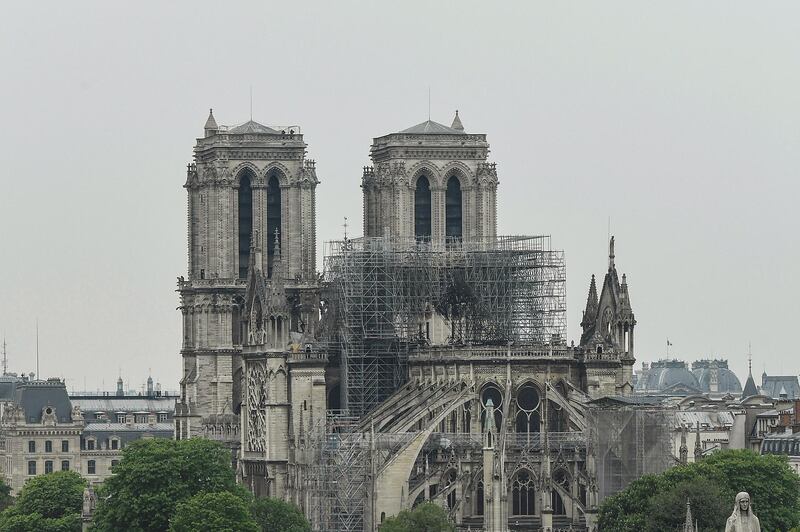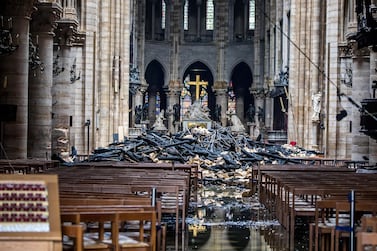Victor Hugo's The Hunchback of Notre-Dame shot to the top of the Amazon bestseller list Tuesday as firefighters damped down the embers of the blaze that ravaged the ancient cathedral.
The original French version of the Gothic novel, Notre-Dame de Paris, became the fastest selling book in France after it came out in 1931 and is also a number one bestseller worldwide in English in two sub-categories of historical fiction.
The Disney animated movie version of the story also rocketed into the top 10 of family films. When Hugo began his sprawling 11-volume tale in 1829, Notre Dame - the "majestic and sublime edifice" which he adored - was crumbling and neglected.
But his epic about the tragic fate of the Gypsy girl Esmeralda who captures the heart of Captain Phoebus, the poet Pierre Gringoire, Archdeacon Frollo - and most of all the hunchback Quasimodo - helped mobilise the mammoth 19th-century restoration of the monument.
One passage, from chapter four of the penultimate volume of the novel, was widely quoted on social media as a prophetic description of Monday's fire, which tore through its roof, sending its spire crashing down into the nave.
"All eyes were turned to the top of the church," Hugo wrote as if describing the millions of people who gathered along the banks of the Seine or watched agog on television as the great 850-year-old structure burned.
Turning to literature
French people have a tendency to turn to literature at times of national crisis.
Sales of the American writer Ernest Hemingway's ode to Paris in the 1920s, A Moveable Feast, soared after the November 2015 Paris attacks.
Hugo set his high-blown romantic story in 1482 during the reign of Louis XI, but much of The Hunchback of Notre Dame is a rumination on the architecture of the building itself.
Many critics have argued that the cathedral is in fact the novel's central character.
In another famous passage from the novel, Hugo bemoans how the medieval landmark at the heart of Paris has been left to crumble.
"Much beauty as it may retain in its old age, it is not easy to repress a sigh, to restrain our anger, when we mark the countless defacements and mutilations to which men and Time have subjected that venerable monument, without respect for Charlemagne (the Holy Roman emperor), who laid the first stone, or Philip Augustus (1165-1223), who laid the last."
A tireless campaigner, Hugo - who many regard as the intellectual godfather of the European Union - lived to see the massive restoration of the cathedral completed by the architects Jean-Baptiste-Antoine Lassus and Eugene Viollet-le-Duc.







